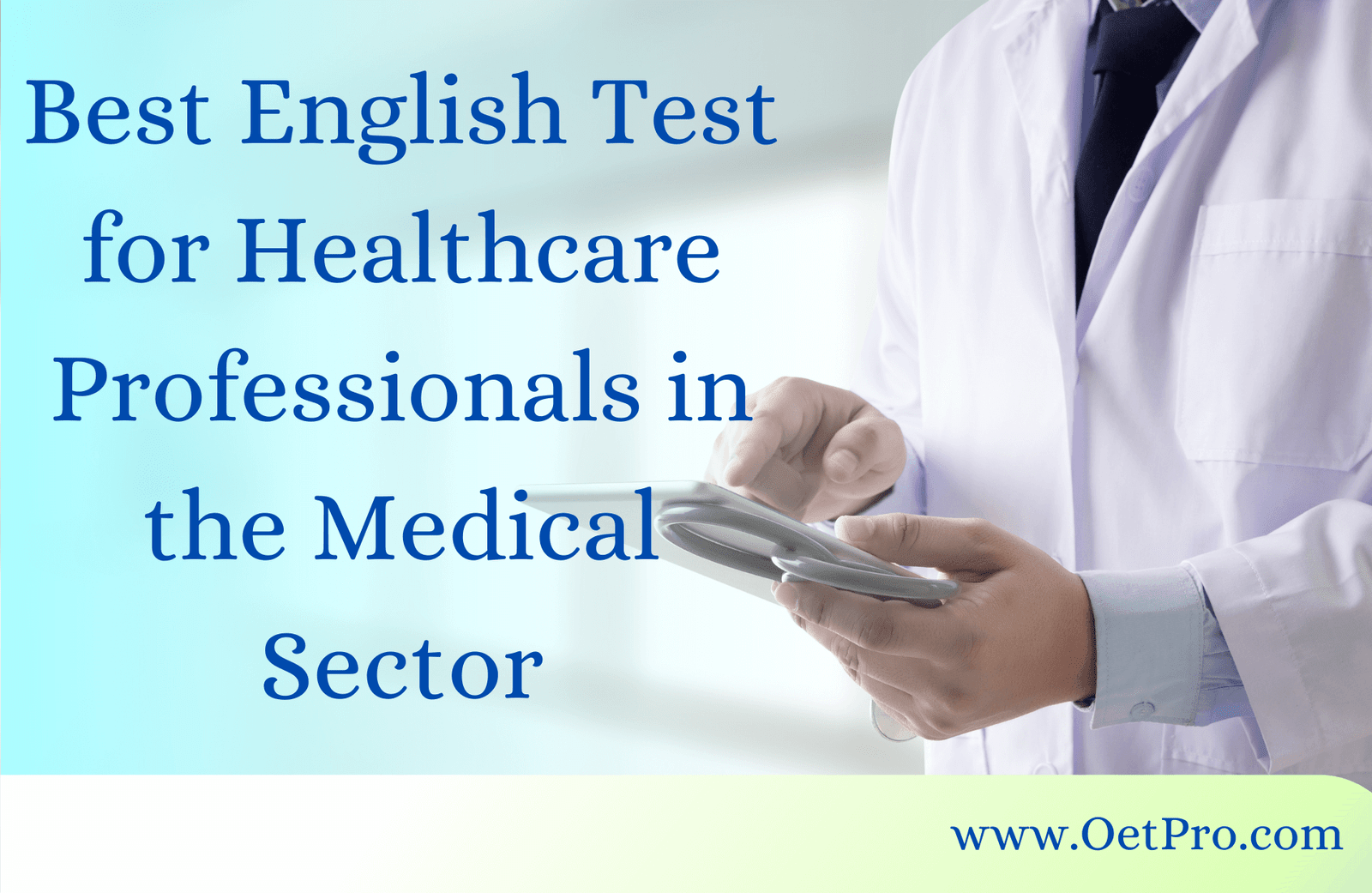
Best English Test for Healthcare Professionals in the Medical Sector
As the healthcare industry becomes more global, professionals must be able to communicate clearly in English while working in multilingual clinical settings. By September 2025, the demand for English-proficient healthcare workers will rise sharply as the world faces a projected shortage of 10 million healthcare professionals by 2030.
Doctors, nurses, pharmacists, and allied health staff increasingly need standardized English tests that are based on real clinical situations. These tests are essential for professional licensing, visas, and employment in countries such as the UK, Australia, Canada, New Zealand, and the US.
Unlike general English tests, healthcare-specific exams evaluate the ability to handle patient consultations, understand medical documents, and communicate during high-pressure clinical scenarios.
This article explains the best English tests for healthcare professionals in 2025. It also highlights the new OET scoring system effective January 29, 2025, and Australia’s updated visa requirements starting August 7, 2025. Preparation platforms like oetpro.com are now crucial for success.
Why English Proficiency Is Essential in Healthcare
Clear communication improves patient safety, enhances teamwork, and prevents medical errors. Miscommunication can lead to wrong treatments, delayed care, and patient dissatisfaction.
Healthcare English tests measure skills such as explaining diagnoses, writing referrals, documenting care, and understanding diverse accents—skills that are even more important with the rapid growth of telehealth in 2025.
To register with authorities like the GMC (UK) or AHPRA (Australia), international doctors must pass an approved English test. These exams are also required for skilled migration visas.
As global mobility increases, strong language proficiency gives healthcare workers a major advantage.
Top English Tests for Healthcare Professionals (Updated for 2025)
There are several English exams available, but their usefulness varies based on acceptance, relevance, and exam structure. Here is a complete guide to the most important tests for 2025.
1. Occupational English Test (OET)
OET is the most preferred test for healthcare workers. It is specifically designed for medical fields including doctors, nurses, pharmacists, physiotherapists, dentists, and others.
Format:
-
Listening (45–50 mins): Includes consultations and workplace conversations with more global accents like Irish and Canadian.
-
Reading (60 mins): Consists of skimming tasks, workplace texts, and long medical passages.
-
Writing (45 mins): A profession-specific letter (180–220 words).
-
Speaking (20 mins): Two medical role-plays with patients or colleagues.
Recognition: Accepted by GMC (UK), NMC (UK), AHPRA (Australia), New Zealand, Canada, and from 2025, the US (ECFMG). OET will also be part of Australia’s 2025 visa rules.
Scoring: Grades A–E (450–500 to 0). Most authorities require a Grade B (350–440).
A new overall score system will make assessment easier in 2025.
Benefits:
Real healthcare scenarios, telehealth-updated content, and global acceptance.
Price: AUD 587 (USD 455).
Highly realistic practice is available at oetpro.com.
2. IELTS Academic
IELTS is widely used for visas and registration but is not healthcare-specific.
Format: Listening, Reading, Writing, Speaking.
Recognition: Accepted in the UK and Australia.
Score: 7.0 overall and 7.0 in each module for most healthcare authorities.
Price: USD 250–300.
3. Pearson Test of English (PTE Academic)
A computer-based, general academic English exam.
Recognition: Some medical boards and visa departments accept it.
Score: 65 to 75 for healthcare workers.
Benefits: Fast results (2–3 days).
Price: USD 200–250.
4. TOEFL iBT
A general English exam mostly used for US university admissions.
Recognition: Limited acceptance for healthcare licensing.
Score: 90–100 for most programs.
Price: USD 200–300.
5. LanguageCert SELT
Used mainly for UK visas.
Structure: Four skills with some health-related questions.
Recognition: Approved by the UK Home Office.
Scoring: Pass/fail based on CEFR level.
Price: USD 150–200.
6. TELC Medizin (B2–C1)
A Europe-focused medical English test.
Recognition: Popular in Germany and European nations.
Structure: Patient communication and medical documentation.
Price: EUR 150–200.
Which Test Is Best for Healthcare Workers?
Choosing the right exam depends on your profession, requirements, and language strengths. Here’s a comparison based on key factors:
Relevance to Medical Work
-
OET: Highly relevant; includes real clinical scenarios.
-
Others: General English tests.
Winner: OET
Acceptance by Medical Authorities
-
OET: Most widely accepted globally.
-
IELTS: Accepted but less relevant.
-
Others: Not widely used for medical licensing.
Winner: OET
Global Recognition and Validity
-
OET and IELTS: Valid for two years, widely accepted.
-
PTE and TOEFL: Best for academics.
-
TELC and LanguageCert: Region-specific.
Winner: OET
Testing Skills and Practical Use
-
OET tests real-world clinical communication.
-
Others focus on academic/general English.
Winner: OET
Value for Money
-
OET is more expensive but directly applicable to healthcare careers.
-
General tests are cheaper but less specific.
Winner: OET
Final Verdict: Best English Test for Healthcare Workers in 2025
OET is the best English proficiency test for healthcare professionals worldwide.
It is the most relevant, most recognized, and most aligned with new healthcare regulations coming in 2025.
While IELTS, PTE, TOEFL, LanguageCert, and TELC have their own advantages, OET remains the top choice for medical professionals aiming to work globally.
Using dedicated preparation platforms like oetpro.com can significantly boost your scores and improve exam readiness.